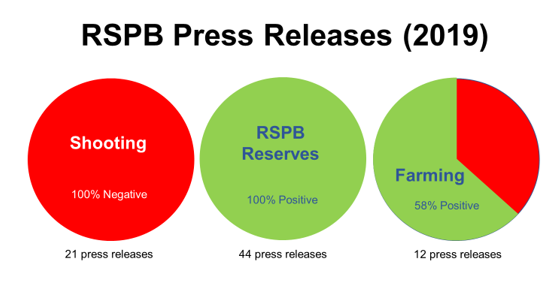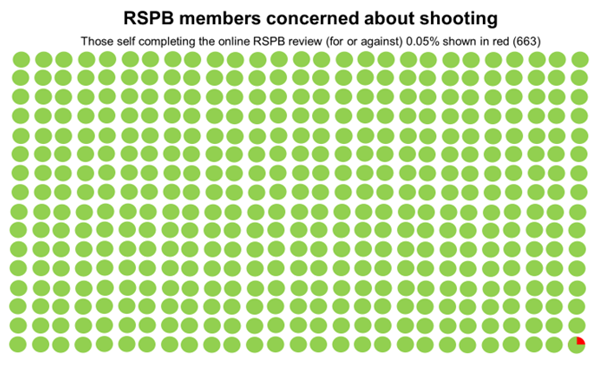By Andrew Gilruth, GWCT Director of Communications
Unless you hold this graph upside down, it’s a stunning success. However, last weekend a senior RSPB staff member repeatedly refused to acknowledge this achievement on social media.

The success is attributed to many factors, including the brood management trial, which explicitly aims to work with grouse moors. This is something the RSPB has, so far, refused to support. With 60 hen harrier chicks fledging from 19 nests (21 if you include the two failed RSPB nests at Geltsdale) this year is the best result in two decades for England.
If RSPB reserves had achieved this result, we might expect it to be called a historic breakthrough. However, a senior member of the RSPB staff repeatedly dismissed the success on this graph because it’s:
- Only a “tiny handful of harriers”. In fact, this result is significant because the Favourable Conservation Status (FCS) of English hen harriers is 61 pairs. So why are the RSPB dismissing the importance of 21 nests?
- “not close to the level that it should be”. The species is still recovering, so why would anyone expect numbers to be at the level they should be? It’s heading in the right direction, so why dismiss it?
- “raptor persecution has not stopped”. This graph is reporting the recovery of hen harriers in England, not illegal killing. Either way we can all celebrate this achievement. The RSPB does exactly this with managed kites, ospreys and sea eagles, so why dismiss it for hen harriers?
- “the good folks of Nidderdale would probably disagree”. I don’t know what the good folk of Nidderdale think of this graph, but I expect they would see it as positive. The comment suggests the RSPB don’t know their views either, so why are staff using it to dismiss this significant achievement?
Since very few species in the UK are “close to the level they should be", presumably the RSPB is using this logic to equally dismiss successes on its own reserves? A quick look at its press releases suggests otherwise. All those about its own reserves was positive last year. In contrast, all those about shooting were negative:

All charities must act in the public interest – and so be neutral. The RSPB-led State of Nature report repeatedly highlights the negative impacts of farm modernisation on wildlife. Despite this it, quite rightly, can find positive messages to say about farming. The same report does not mention shooting driving wildlife declines, but that does not appear to stop the RSPB projecting it negatively to the public and its members. It’s not clear how this is in the public interest to do so.
The RSPB also claimed that it instigated its recent review of game shooting due to “growing public concerns”. This was attributed to concerning stories appearing in the media. However, this is no proxy for public opinion if your press office is pumping out two negative stories on the subject each month. Perhaps a more reliable proxy of concern might be the percentage of RSPB members that decided to actively engage in the review. Of its 1.2 million members, just 663 (0.05%) took up the offer to self-complete the online review:

RSPB Chairman Kevin Cox said in his AGM statement that “Land well managed for shooting can have considerable wildlife benefits, for example by providing habitat that can benefit species other than gamebirds”. This is a view shared by the GWCT and possibly a vast number of RSPB members. However, it’s clearly not one that all senior RSPB staff nor its press office are willing to share.
In contrast, the GWCT will continue to remain neutral and work in a constructive way with all those who wish to boost wildlife on their land – alongside existing economic land use. We feel conservation needs a new approach; if you do too, please sign our pledge here.